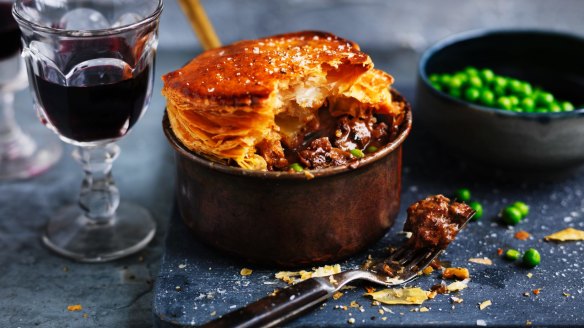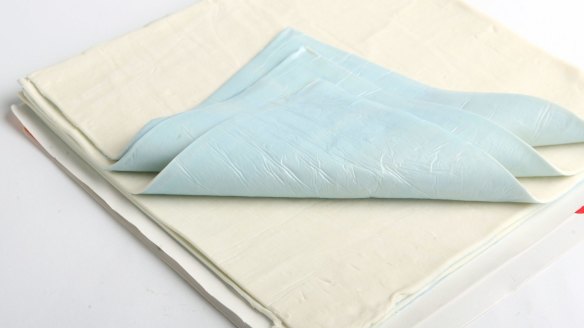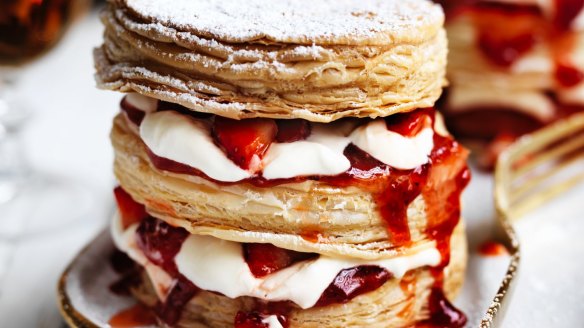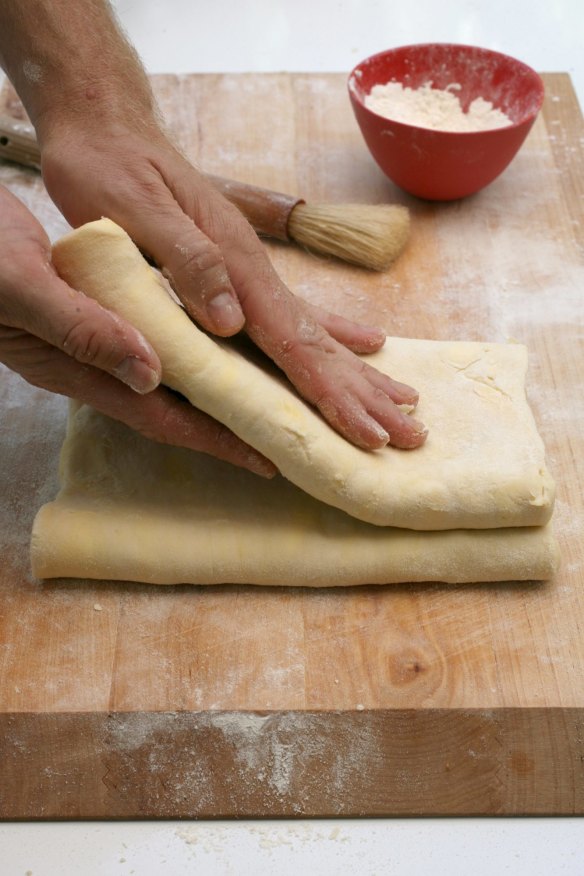How to use frozen puff pastry, one of the best kitchen shortcuts

Sometimes you feel like you can't win with people. Take kitchen shortcuts, for example. You suggest a shortcut or store-bought item to make a dish easier or faster, and you get dinged by purists who complain that this is just another sign of laziness or the collapse of modern society. Or, instead, you insist that something is worth making from scratch even if it is longer or takes more effort, and then you get harangued for being too complicated. It's a tough line to walk.
But I feel pretty confident that most people – most reasonable people, anyway – will agree that store-bought puff pastry is an excellent, totally acceptable shortcut.

Puff pastry takes time, effort and skill, three things which can be in short supply for any type of cook. Puff pastry is exactly what it sounds like: Pastry that puffs into beautiful layers. It's made by enclosing butter in dough and then executing a series of rolls, folds and turns to build up many layers. When the pastry is heated, steam, generated by the melting butter, pushes apart the layers of dough, creating the characteristic flake.
Even experienced bakers can struggle with puff pastry (myself included), but, thankfully, the store-bought freezer staple can be just as good, or better. Use it to make tarts, turnovers elegant hors d'oeuvres and more. Here are tips for getting the best results:
Choose butter, if you can

Butter-based puff pastry will deliver better flavour, especially if there isn't a whole lot else to distract you. Still, if no butter-puff is to be had, don't worry.
Mind your temperatures
Anyone who knows me can tell you I'm a better-safe-than-sorry kind of gal, which is why I think it's preferable to defrost your frozen puff pastry in the fridge. It will be fine in three to four hours, but if you're thinking ahead, the night before works, too. You can try to defrost on the bench for less than an hour, with the timing somewhat dependent on your kitchen's temperature, but you run the risk of it getting too soft. Chilled dough is important so that the butter stays relatively cool – not melting – to generate those irresistible layers. You want the dough pliable enough, though, because if it's too cold, it can tear or break when you are unfolding or rolling it. A brief stint on the bench after defrosting in the fridge can help. Once you've cut or shaped your puff pastry, you can pop it back in the fridge or freezer to firm back up so that it holds its layers and shape in the oven.

Stay sharp
Whether you're using a knife or cookie cutter to cut your dough, make sure its edge is sharp. Dull blades can crush the layers so that they don't puff up properly. You can also hinder layers if your otherwise clean-cut edges are sealed shut with excess eggwash that has dripped down the sides of your pastry, according to Lauren Chattman in The Baking Answer Book. Egg washes (beaten egg, with or without a bit of water or milk mixed in) are great for shine and colour, as long as you're judicious about how much you brush on the dough before baking.
Roll carefully
Lightly dust your counter and rolling pin with flour. Or, for sweet pastries, you can consider using icing sugar. You want enough to keep the dough from sticking, but don't go overboard. If you get a little too heavy-handed, brush off the excess flour or sugar. As you roll, apply firm, even pressure. Just don't press down too hard or, again, you'll crush those beautiful layers.
Prepare to bake
Baking puff pastry on baking paper is a good idea for easy clean-up, Chattman writes. Even generally well-prepared puff pastry can leak some butter or have a little eggwash run down the sides, and it's nice to not have to clean that up or worry about the pastry sticking to the tray. Plus, when you're done baking, you can slide the sheet of paper, pastries and all, onto a wire rack to cool. (Cooling on a wire rack ensures a crisp bottom crust.)
Don't fear the brown
"When baking puff pastry, you want to go past golden and well into brown, so that the dough underneath the crust is fully dry," Chattman writes. And browned pastry is flavourful pastry. Chattman also suggests baking in the lower third of the oven as extra insurance that the bottom is cooked. And to further ensure crisp pastry, she shares a tip from former White House pastry chef Roland Mesnier, who props open the oven just as the pastry is starting to brown so steam that might soften the crust can escape.
Use it in all kinds of dishes
Puff pastry is an ideal base for tarts, big or small, sweet or savoury. The ability of puff pastry to, well, puff – up to eight times its original size – means you have a built-in rim. To created a raised crust, score a line in the pastry about two-and-a-half centimetres away from the sides of the dough; more or less depending on how wide you want the edge to be. Then prick the dough inside of that line all over with a fork (docking, in pastry talk), so that the steam quickly escapes in lots of places rather than causing the layers to rise. For heavy or soggy fillings, you can partially bake the crust so that the dough starts to rise and set. Especially if you're adding them directly to cold dough, use cool fillings to keep the butter from melting.
Small rounds or squares of puff pastry can be tucked into a greased muffin tin for mini tartlets. Add a filling that needs to be cooked, or bake the shells completely (definitely dock the dough so you end up with a hole to fill), and then scoop in raw or already cooked fillings just before serving.
Use circles as lids for pot pies or make a stewlike filling separately and top it with a cooked square of puff pastry.
Encase your choice of filling in folded squares or rounds of puff pastry for riffs on turnovers or empanadas. Try a tarte tatin. Or go all out and make a beef or vegetarian Wellington. (Here are 30 ways with frozen puff pastry.)
Keep your scraps
If you're cutting shapes and have leftover dough, don't throw it out! Pressing scraps together and re-rolling them isn't a recipe for flaky pastry. But there's no reason you can't cut strips that you twist and dust with cheese to make cheese straws. Or sprinkle the scraps with cinnamon and sugar for a sweet treat. Who knows, maybe you'll decide these gussied-up leftovers are the best part.
The Washington Post
The best recipes from Australia's leading chefs straight to your inbox.
Sign up- More:
- How to